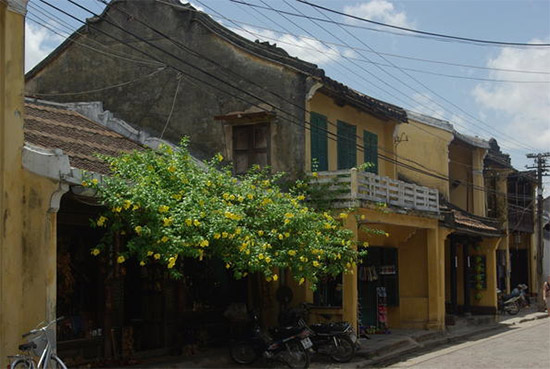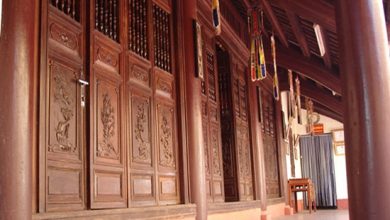Hoi An Ancient Town
Hoi An Ancient Town is an exceptionally well-preserved example of a South-East Asian trading port dating from the 15th to the 19th century. Its buildings and its street plan reflect the influences, both indigenous and foreign, that have combined to produce this unique heritage site.
Hoi An, an exceptionally well-preserved example of a traditional Asian trading port, is an outstanding material manifestation of the fusion of cultures over time in an international maritime commercial centre.
The town is a special example of a traditional trading port in South-East Asia which has been completely and assiduously preserved: it is the only town in Viet Nam that has survived intact in this way. Most of the buildings are in the traditional architectural style of the 19th and 20th centuries. They are aligned along narrow lanes of traditional type. They include many religious buildings, such as pagodas, temples, meeting houses, etc., which relate to the development of a port community. The traditional lifestyle, religion, customs and cooking have been preserved and many festivals still take place annually.
Archaeological finds and excavations have shown that there was a port and trading centre of the local Sa Huynh people along the Thu Bon River as early as the 2nd century BC. This continued to expand, especially during its most flourishing period from the late 16th to the early 18th centuries. It was through Hoi An that Christianity penetrated Vietnam in the 17th century.
By the end of the century, the rise of other ports on the coast of Vietnam, in particular Da Nang, and silting of its harbour, led to the final eclipse of Hoi An. As a result of this economic stagnation, it has preserved its early appearance in a remarkably intact state, the only town in the country to have done so. The ancient town is situated on the north bank of Thu Bon River. There is a street running east-west along the river’s edge and three further streets parallel to the river. They are intersected at right angles by streets and alleys. Within this area there are houses (often combined with shops), religious monuments such as pagodas, temples, communal houses and family cult houses, a ferry quay and an open market.
The architecture of Hoi An, which is almost entirely of wood, is of considerable interest. It combines traditional Vietnamese designs and techniques with those from other countries, above all China and Japan, whose citizens settled there to trade and built houses and community centres to their own designs.
The typical house conforms to a corridor plan, the following elements occurring in sequence: house, yard and house. The buildings are:
- family cult houses, dedicated to the worship of ancestors;
- the community houses, used for worship of ancient sages, founders of settlements, or the legendary founders of crafts;
- the pagodas are almost all from the 19th century, although inscriptions show them to have been founded in the 17th and 18th centuries. They conform to a square layout and decoration is largely confined to the elaborate roofs. In the case of the larger examples, they constituted nuclei of associated buildings with religious and secular functions. Some of the larger pagodas also served as meeting halls. These are located along the main street (Tran Phu).
There is a fine wooden bridge, reminiscent of Japanese examples, with a pagoda on it. It has existed from at least the early 18th century, as an inscription indicates, but it has been reconstructed many times. There is also a number of ancient tombs in Vietnamese, Japanese and Chinese style within the buffer zone.
Historical Description
Archaeological finds and excavations have shown that there was a port and trading centre of the local Sa Huynh people along the Thu Bon river as early as the 2nd century BC. This continued to expand, and by the 15th century Hoi An (known in Vietnam and abroad under various names – Fayfo, Haifo, Kaifo, Faifoo, Faicfo, Hoai Pho) was already the most important port of the powerful Champa Kingdom. It continued after the Vietnamese absorption of the Champa Kingdom in the same capacity, becoming one of the most important centres of mercantile, and hence cultural, exchange in South-East Asia, attracting ships and traders from elsewhere in Asia and from Europe, especially during its most flourishing period from the late 16th century to the early 18th century. It was through Hoi An that Christianity penetrated Vietnam in the 17th century.
It retained its role as the main port of the central region throughout the 19th century, when the Nguyen dynasty kings operated a “closed trade policy.” By the end of the century, the rise of other ports on the coast of Vietnam, in particular Da Nang, and silting of its harbour, led to the final eclipse of Hoi An. As a result of this economic stagnation, it has preserved its early appearance in a remarkably intact state.






